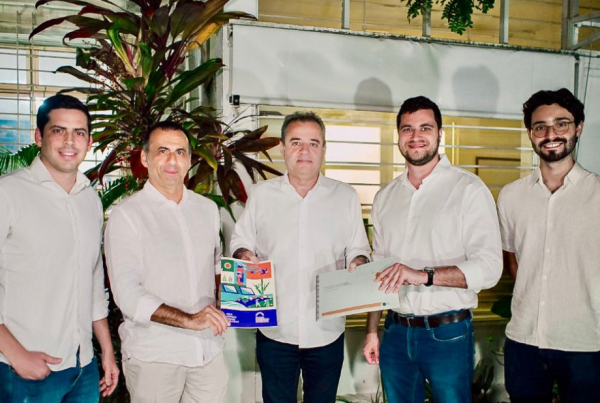In many conversations, from the barroom to investment fund meetings, speculation about the value of the “carbon credit” has increased. I always maintain that they should never have used the term “credit” in this mechanism because it creates a lot of confusion, particularly with ideas of financial credit. It is better to just call it an environmental “asset”, because this has been scaring the speculation class, thinking that a new “gold rush” is ahead of us. Be very calm at this time. Not even the meetings in Davos were enough to generate a “rush”, but it certainly heated up the list of topics in the economic and corporate wheels. All this is a very good sign.
Hawaii recently had an initiative to regulate the price of carbon in a regional market at $40.00. The American state of Hawaii may be right, as it may be tremendously wrong. However, many people forget that the famous European ETS (Emission Trading System) had set fines in this amount years ago, targeting companies or emitters of GHG (greenhouse gases) that did not comply with pre-agreed reductions (a Cap & Trade system). But nothing really fantastic has happened in that market and it has followed the general trend of reduction of activities, because of the lack of an international regulatory system, of multi-lateral agreements. Hawaii, however, takes a courageous step and demonstrates that the regulatory system in that American state actually has powers that can be exercised.
In the quest to establish, or even understand, pricing behavior for carbon, the debate is multi-faceted and no one is entirely sure. Apparently this is what the best minds discussing the topic say, in the best academic houses and families. But there is certainly one “actor” who, by his nature, is closer to the “center of the scales”, and this is the Public Manager (governments). When governments, in any jurisdiction (federal, state or municipal) decide to do something to change a stagnant situation, this can really contribute to the success of a market mechanism that helps everyone and everything. In Brazil, apparently, the states of the federation are dissonant with the federal government, and I think even correctly so. The federal government’s CLIMATE environmental policy proves to be a thing of the Middle Ages and the more astute and visionary governors are occupying this space correctly, inchalá…
Economists are always further from the center and make more mistakes…as they debate elucidated economic theories, with a high degree of uncertainty, ego trips, pride and prepotency, but ALWAYS are the actors who help the most those with their hands in the dough. This is a certain contradiction, and in fact very useful, because these debates, however complex they may be, allow the market players to make more informed reflections. Marketing people love to sell narratives, the current fads of “storytellings” and they go to the media and throw a lot of ideas to the wind. The intuitive actions of the different market players increase and the market starts its engines. Political scientists, economists, geopoliticians, etc. always rely on theories that obliterate their intuition, but help us a lot with their enormous credibility, because they know how to construct thoughts and visions of an inexorable future.
Even if public managers have to be pragmatic, market players take risks and even play with luck and possibilities. They learn with time a rare intelligence, much to the despair of the regulators. The intelligence of knowing how to read Time Series and the futures markets with their speculative models. The game begins and the different market tools are tested and enhance the relationships between the actual producers and consumers of goods and services.
Whether the optimal price of carbon is 40, 100, 200 or 400 will all depend on the regulatory instruments that will bring the different players into the fray, get the rats out of the burrows, expose the viscera of the problem. These actors are the usual suspects: entrepreneurs, developers, speculators, investors, and those with the capital to make the machines work.
But without the regulatory instruments that only governments can propose and install, nothing will happen. If there are no obligations to be fulfilled by the different sectors and ALSO the market mechanisms to create competitiveness and efficiency of the processes, we have little chance of overcoming the problems of climate change that come from the evolution of the globalized economy. So, in my view, without enforcement instruments the carbon price will be below US$1.00/ton and only with enforcement instruments the values will exceed US$10.00/ton.
In other words, regulatory mechanisms have to exist and even create coercive processes to change the behavior of the sectors. But if they just regulate unilaterally, they will strangle development, and that’s what “Cap and Trade” type market mechanisms are for. They allow the set of actors to seek ways to increase the efficiency of the process through the regulated relationship that establishes values as a result of the relationships. Now that is a living economy among private entities. And the regulatory system evolves and improves and perfects itself and surrounds the smart guys….
In my opinion, the rest is the old “wishful thinking”, that is, a mere hopeful view that the human being will win at the end of the story, one soap opera too many. It won’t…we will all lose out if we don’t come up with an intelligent way to regulate the markets and make room for the creativity and efficiency of the actors. Without this, we will continue going to the Climate Convention COPs, full of hope and returning frustrated?
Special attention must be paid to the OIL factor, especially with its price fluctuations on the international market. If oil continues its low price trend, its use will probably increase and global emissions will obviously rise at a very crucial time for the future prospects of humanity. With this, compensation mechanisms such as market instruments will take on an even greater role. However, we cannot just rely on these mechanisms that have been designed and established as a “bridge” to a low-carbon economic future. This is very serious and we should not use these mechanisms in an irresponsible way as demonstrated by the leaders of the OIL sector.
Markets are almost like living beings…you never know what is going to happen, but if you don’t wake up early and try to understand what the end of the day will be like, probably the one who won’t see the end of the day will be you.
Let’s continue to reflect:




